Backhoe Thumb Attachments for Sale: Boost Your Excavator Equipment Efficiency - Bonovo
An excavator or backhoe is already a powerhouse on any job site. But what if you could make it even more versatile and efficient? That's where a thumb attachment comes in. This guide is for construction company owners, fleet managers like Mark Thompson, and anyone looking to get more out of their heavy equipment. As Allen, representing a factory in China specializing in high-quality excavator attachments, I want to share insights into why a backhoe thumb is a game-changer. We'll explore the different types of thumbs, how to choose the right one for your excavator or backhoe, installation, maintenance, and how this simple attachment can significantly boost your productivity and profitability. If you're looking for a new thumb for sale, or just want to understand this valuable product better, you're in the right place. We'll delve into how a thumb can transform your machine into a multi-purpose material handling marvel.
What Exactly is a Backhoe Thumb and Why Does Your Excavator Need This Crucial Attachment?
Often, when people say "backhoe thumb," they're referring to an attachment that can be fitted to both backhoes and, more commonly, excavators of all sizes. Think of it like the opposable thumb on a human hand. An excavator bucket alone can scoop, but it can't securely grab or hold irregular objects. A thumb works in conjunction with the bucket (or sometimes a rake or other attachment) to provide this gripping capability. This new level of control allows your excavator to pick up, place, and sort materials like rocks, logs, debris, pipes, and more with precision. For businesses like Mark Thompson's, this means one piece of equipment can do the work of several, or at least do it much faster.
So, why is this crucial? Efficiency and versatility. Without a thumb, operators might struggle with loose materials, or require additional ground personnel for tasks like clearing sites or loading trucks. This wastes time and money. A backhoe thumb transforms your excavator from a simple digging machine into a sophisticated material handling tool. Whether you're in construction, demolition, landscaping, forestry, or even agriculture, the ability to securely grabber and manipulate objects is invaluable. The thumb significantly expands the range of tasks your excavator or backhoe can perform, making your equipment investment go much further. For many, a thumb is not just an add-on; it's an essential product for maximizing operational output. It's a relatively small investment for a big return in productivity. The use of a thumb is widespread for good reason.
A thumb can be particularly useful when paired with a standard digging bucket or even a specialized general-duty excavator bucket. The synergy between the bucket and the thumb allows for a secure grip on a wide variety of materials. Consider tasks like demolition, where sorting recyclable materials from waste is crucial, or forestry, where log handling is a primary activity. The thumb allows for precise control, reducing damage to valuable materials and improving safety on site. Investing in a new thumb often pays for itself quickly through these enhanced capabilities. The design of the thumb itself, including the number of tines and their shape, can also be optimized for specific types of material.
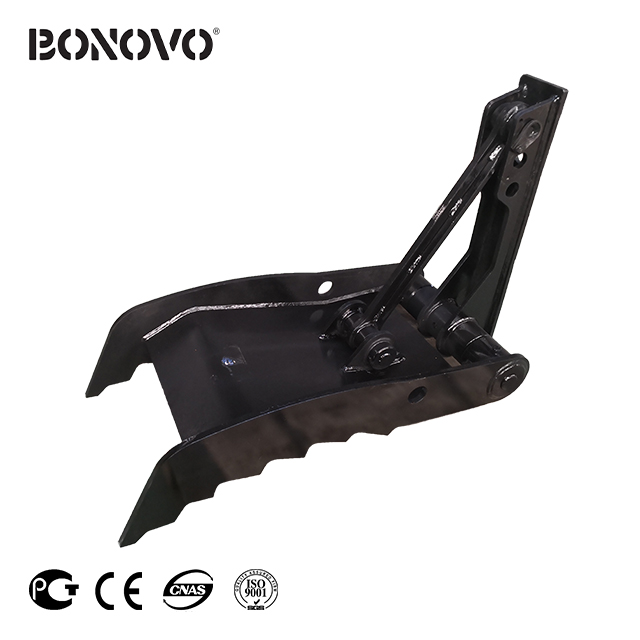
Mechanical Thumb vs. Hydraulic Thumb for Your Backhoe: Which is the Best Fit?
When looking for a backhoe thumb for sale, you'll primarily encounter two types: mechanical and hydraulic. A mechanical thumb, also known as a "rigid" or "fixed" thumb, is the simpler of the two. It's typically set in a few fixed positions using a manually adjusted stiff arm or strut. To change the thumb's position relative to the bucket, the operator usually has to get out of the cab and move a pin. While more basic, a mechanical thumb is generally less expensive upfront and has fewer moving parts, meaning potentially less maintenance. It's a good entry-level option or for tasks where the thumb is used less frequently or for similar-sized objects.
A hydraulic thumb, on the other hand, offers far more versatility and control. It's powered by the excavator's hydraulic system, allowing the operator to open and close the thumb from the cab, on the fly. This means you can adjust the grip precisely for different sized and shaped objects without interruption. This full range of motion makes a hydraulic thumb ideal for complex sorting tasks, demolition, and any job requiring frequent manipulation of varied materials. While a hydraulic thumb has a higher initial price and requires hydraulic lines to be run to the excavator arm if not already present, the productivity gains often outweigh these costs for busy operations. The cylinder that powers the hydraulic thumb needs to be robust to handle the forces involved. For many companies, especially those like Mark's that prioritize efficiency, the hydraulic thumb is the best choice for their excavator equipment.
The decision between a mechanical thumb and a hydraulic thumb really depends on your specific needs and budget. If you only need a thumb occasionally for simple tasks, a mechanical version might suffice. However, if your excavator is frequently used for material handling, loading, or sorting, the investment in a hydraulic thumb will likely provide a significant return through increased speed and precision. Many modern excavators, even smaller Kubota models, are equipped or can be easily fitted with auxiliary hydraulics, making the hydraulic thumb an accessible upgrade. Ultimately, the best fit is the one that aligns with your operational demands and the capabilities of your excavator or backhoe.
Key Factors for Your New Thumb: Compatibility with Your Excavator (Pin, Model, Ton)?
Choosing the right new thumb for your excavator or backhoe isn't just about picking one from a listing; compatibility is paramount. The most critical factor is ensuring the thumb will correctly fit your specific machine. This involves several considerations. First, the main pin size of your excavator's bucket and dipper arm. The thumb often mounts using this existing pin or requires a dedicated mounting pin of a specific diameter. For instance, a larger excavator like a Caterpillar 336 excavator will have a much larger main pin diameter (e.g., potentially a 90mm pin or larger) than a compact excavator.
Secondly, the excavator model and weight class (often measured in tons) are crucial. Manufacturers like us design thumbs to match the breakout force and geometry of specific excavator models or a range of similar-sized machines. A thumb designed for a 5-ton excavator will not be robust enough for a 20-ton machine, and vice-versa. You need to know your excavator's brand (e.g., Cat, Deere, Komatsu, Volvo) and model number to find a thumb that is a proper fit. The length of the thumb should also be appropriate for the bucket size; too short, and it won't be effective, too long, and it might interfere with the bucket or cab.
Finally, consider the mounting style. Some thumbs are "pin-on," utilizing the existing bucket pin, while others might require welding a base plate to the excavator arm. If you're purchasing a new thumb, especially from an overseas supplier like our factory, providing detailed specifications of your excavator is key. This ensures the product you receive is a perfect fit and ready for use without costly modifications. For Mark Thompson, who is concerned about adherence to specifications, this detailed exchange of information is vital for a successful purchase. We always recommend confirming these details before placing an order for any excavator attachment. It's also important to consider if the thumb is designed to fold away when not in use, a useful feature for many operators.
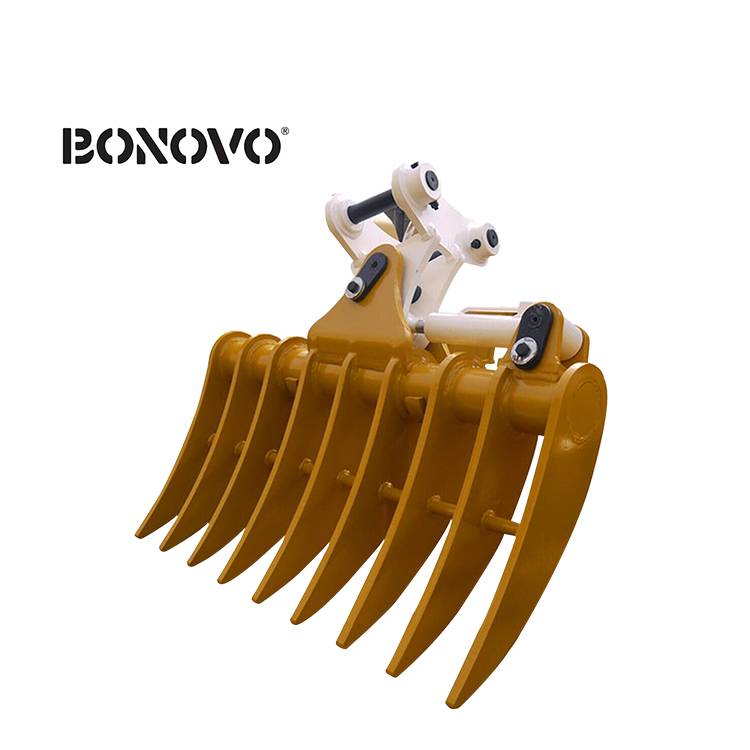
How Does an Excavator Thumb Improve Material Handling for Brands like Cat, Deere, and Komatsu?
An excavator thumb dramatically enhances material handling capabilities for virtually any brand of excavator, including popular ones like Caterpillar (Cat), John Deere, and Komatsu. Without a thumb, an excavator bucket is primarily limited to scooping and digging loose earth. But add a thumb, and suddenly your powerful excavator can securely grip, lift, place, and sort a vast array of objects. For a Caterpillar excavator on a demolition site, this means easily picking up chunks of concrete or tangled rebar. For a Deere excavator in a forestry operation, it allows for efficient log handling, stacking, and loading. A Komatsu excavator in a recycling yard can use a thumb to sort different types of scrap material.
The improvement comes from the thumb acting as an opposable digit, working against the bucket to create a secure grapple-like hold. This precision is something a bucket alone, or even a simple tooth on a bucket, cannot achieve for larger or awkwardly shaped items. This enhanced control translates directly to increased productivity. Tasks that might have taken multiple attempts or required manual assistance can be done quickly and safely by a single operator. For large construction companies using fleets of Cat or Deere equipment, the time savings across multiple machines and projects add up significantly. The thumb essentially turns a specialized digging machine into a versatile material handling solution, making it an indispensable attachment for these leading excavator brands.
Furthermore, the ability to stabilize loads with a thumb improves safety on the job site. Carrying unstable items like boulders or large pieces of wood can be hazardous. A thumb ensures a firm grip, reducing the risk of a load shifting or falling during movement. This is a critical consideration for any safety-conscious operation. The investment in a quality thumb for your Caterpillar, Deere, or Komatsu excavator is not just about doing more; it's about doing it more efficiently and safely. It's an excavator attachment that truly expands the utility of the base machine.
Universal Backhoe Thumbs vs. Model-Specific Design: What Fits Your Kubota or New Holland?
When you're in the market for a new thumb attachment, especially for excavator brands like Kubota or New Holland, you'll encounter both universal thumbs and model-specific designs. A universal backhoe thumb is designed to fit a range of excavator or backhoe models within a certain size class (e.g., 3-5 ton machines). These often come with adjustable mounting brackets or require some on-site modification, like drilling holes or welding, to achieve a proper fit. The main appeal of a universal thumb is often a lower initial price and broader availability. However, "universal" doesn't always mean a perfect fit for every single machine in its stated range.
Model-specific thumbs, on the other hand, are engineered to fit a particular excavator model or a very narrow range of models from a specific brand like Kubota, New Holland, or even a Mahindra backhoe. These thumbs are designed considering the exact geometry of the excavator's boom and stick, the bucket linkage, and the main pin diameter. This ensures optimal performance, correct leverage, and often a more straightforward installation. While potentially having a slightly higher price, a model-specific thumb usually offers a more integrated and efficient solution. For owners of Kubota excavators or New Holland backhoes, who value precision and reliability, a model-specific thumb often provides better long-term value.
The choice depends on your priorities. If you have a common excavator model and value ease of installation and optimal performance, a model-specific thumb is generally the way to go. If you're looking for a more budget-friendly option for a less common machine or are comfortable with potential modifications, a universal thumb might be considered. However, it's crucial to verify the mounting requirements and ensure the universal thumb is robust enough for your excavator's capacity. As a manufacturer, we typically recommend model-specific designs for the best fit and performance, ensuring the thumb and excavator work together seamlessly. We can produce thumbs tailored to your specific equipment, whether it's a popular brand or a more niche machine.
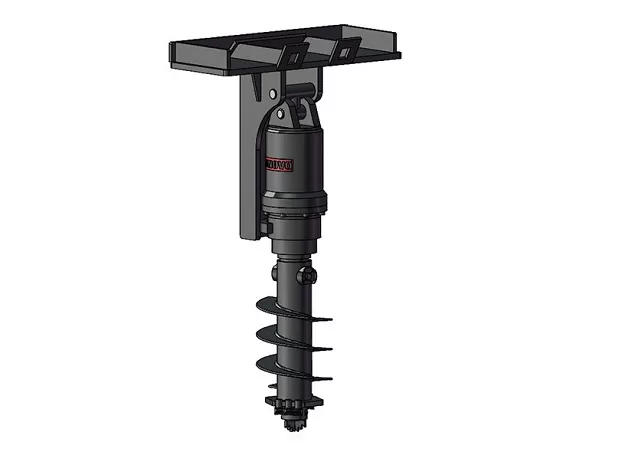
Is a Hydraulic Thumb Easy to Install on Your Excavator Boom? (Bolt-on vs. Weld-on)
Installing a new hydraulic thumb on your excavator boom can vary in difficulty, largely depending on the thumb's design and your machine's existing setup. Generally, there are two main installation methods for a thumb: bolt-on and weld-on. A "bolt-on" thumb is often perceived as easy to install. These thumbs typically come with pre-drilled base plates and mounting hardware. If your excavator arm already has corresponding mounting holes (some manufacturers provide these for attachments), the process can be relatively straightforward. However, if holes need to be drilled, it requires precise measurement and heavy-duty drilling capabilities.
A "weld-on" thumb requires welding a base plate or mounting lugs directly onto the excavator stick (dipper arm). This method can provide a very strong and permanent fit, but it requires proficient welding skills and proper preparation of the surfaces. For many, especially those without in-house fabrication capabilities, this means hiring a professional welder. The advantage is that the thumb can be positioned exactly where you want it for optimal geometry with your bucket and pin. The hydraulic connections for the cylinder also need to be considered; your excavator must have auxiliary hydraulic lines running to the end of the arm, or these will need to be installed.
For individuals like Mark Thompson, who value efficiency and minimizing downtime, the ease of installation is a key factor. A well-designed hydraulic thumb kit, whether bolt-on or requiring some welding, should come with clear instructions. Many thumbs are designed to be as easy to install as possible, but it's important to be realistic about the skills and tools required. If your excavator is already plumbed for hydraulic attachments, connecting the hydraulic thumb cylinder is usually a matter of attaching hoses to existing quick couplers or ports. Always ensure the hydraulic system pressure and flow match the requirements of the thumb's cylinder.
Maintaining Your Heavy Duty Excavator Thumb: Tips for Pin Care, Grease, and Longevity
Once your heavy duty excavator thumb is installed, proper maintenance is key to ensuring its longevity and reliable performance. Just like any other piece of equipment or attachment, a thumb is subject to wear and tear, especially in demanding conditions. The most critical aspect of thumb maintenance revolves around its pivot points, primarily the pins. These pins, including the main pin it might share with the bucket and any dedicated thumb pivot pins, need regular attention.
Regular greasing is essential. Most thumbs will have grease zerks (nipples) at their pivot points and at the hydraulic cylinder connection points (for a hydraulic thumb). Applying grease according to the manufacturer's schedule (often daily or every few hours of use) reduces friction, prevents seizing, and flushes out dirt and contaminants. This simple step can drastically extend the life of the pins and bushings. Also, visually inspect the pins and their retaining mechanisms (like bolts or snap rings) regularly. A loose or damaged pin can lead to excessive wear or even failure of the thumb attachment.
Beyond pin care and grease, periodically inspect the entire thumb structure for any signs of cracks, bends, or excessive wear, especially on the tines that make contact with material. For a hydraulic thumb, check the hydraulic cylinder for leaks and the hoses for any damage or abrasion. Keeping the thumb clean also helps in identifying potential issues early. A well-maintained thumb will not only last longer but will also perform more effectively and safely. Storing the thumb properly, perhaps folded away when not in use if it's a stowable design, can also protect it from unnecessary damage. These maintenance practices are vital for any heavy duty excavator attachment.
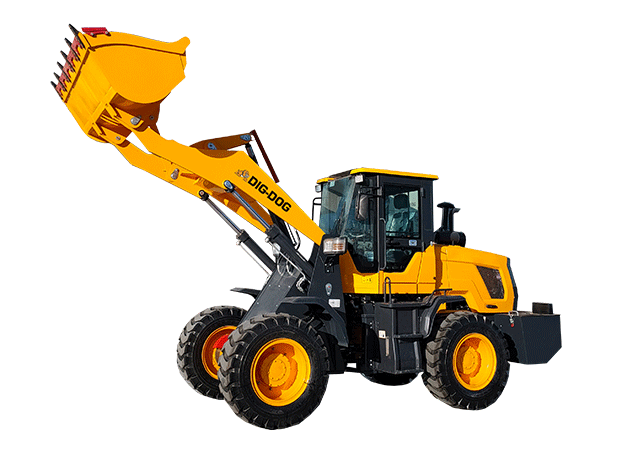
When you're ready to find and purchase a backhoe thumb (or excavator thumb), you have several avenues to explore. Many equipment dealers who sale excavators also offer a range of attachments, including thumbs. This can be a convenient option, especially if you're buying a new machine. However, for those looking for potentially better pricing or a wider selection, exploring online shops and manufacturer direct options, like what we offer at Bonovo, can be very beneficial. You'll often find listings for both new and used thumbs.
Navigating online listings requires some diligence. Pay close attention to the specifications: the thumb type (mechanical or hydraulic), the size and weight class it's designed for (e.g., for a 5-ton excavator or a 20-ton excavator), the required pin diameter, and the mounting method. Good listings will include clear photos and detailed descriptions. Don't hesitate to contact the seller (whether it's a dealer, a reseller, or a factory like ours) to ask specific questions about compatibility with your excavator model (e.g., Cat, Deere, Kubota, Case). This is where clear communication, a pain point Mark Thompson sometimes faces, is crucial. As a factory, we aim to provide all necessary information upfront.
For buyers like Mark, who are quality-sensitive but also seek competitive prices, buying direct from a manufacturer in a country like China can be an attractive option. It often cuts out middlemen, leading to cost savings. However, it's essential to vet the supplier. Look for factories with a proven track record, good customer reviews (if available online), and clear communication channels. Inquire about warranty, shipping, and after-sales support. At Bonovo Excavator Attachments, we specialize in a wide range of thumbs and other excavator attachments, and we understand the importance of providing a quality product at a fair price, backed by solid service. Many customers find great value by working directly with us to get the precise thumb they need.
Beyond the Thumb: How Quick Couplers and Other Attachments Enhance Your Excavator's Versatility
While a thumb is a fantastic attachment for enhancing an excavator's material handling capabilities, it's just one piece of the puzzle in maximizing your equipment's versatility. To truly get the most out of your excavator or backhoe, consider a system of attachments. And the key to efficiently switching between these attachments is a quick coupler. A mechanical quick coupler or a hydraulic quick coupler allows the operator to change attachments (like a bucket, thumb, hammer, ripper, or grapple) in minutes, without needing to manually drive out pins.
Imagine this: your excavator starts the day with a heavy duty digging bucket for excavation. Then, using a quick coupler, you switch to a bucket and thumb combination for loading debris. Later, you might need a hydraulic breaker (hammer) for concrete demolition, or an auger for drilling holes. Each switch takes minimal time, meaning your excavator spends more time working and less time idle during attachment changes. This is a massive productivity booster. The ability to rapidly deploy the right tool for the job makes your excavator a true multi-tasker.
Other valuable attachments that work well in conjunction with or as alternatives to a thumb setup include dedicated grapples (like demolition or rotating grapples), different types of buckets (trenching buckets, skeleton buckets, tilt buckets), and even specialized tools like tree shears or compactors. Each product is designed for specific tasks, and a quick coupler system makes it feasible to own and use a wider range of them. For a company aiming for maximum efficiency, investing in a quick coupler and a suite of relevant excavator attachments, including a reliable backhoe mechanical thumb, is a smart strategy. This approach ensures your excavator equipment is always ready for the next challenge.
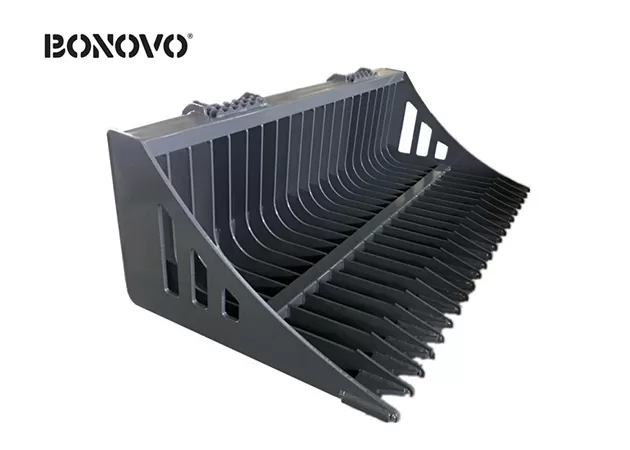
Understanding Thumb Design: Main Pin Diameter, Cylinders, and Stabilizing Wood or Debris
The design of an excavator thumb is critical to its performance and durability. Several key elements contribute to a well-designed thumb. The main pin diameter compatibility is fundamental, as we've discussed, ensuring it correctly interfaces with your excavator's dipper arm and bucket linkage. The structural integrity of the thumb itself is also vital. High-strength, wear-resistant steel (like NM400, NM500, or Hardox) should be used for the tines and body, especially for a heavy duty thumb designed for rigorous tasks such as handling rock or demolition debris. The number and shape of the tines also play a role; fewer, thicker tines might be better for large, abrasive objects, while more tines can offer a better grip on loose material or smaller items like brush or wood.
For hydraulic thumbs, the hydraulic cylinder is the heart of the attachment. It must be robustly constructed, with proper seals and a rod strong enough to withstand the high forces involved in gripping and crushing. The cylinder size (bore and stroke) must be matched to the excavator's hydraulic system and the intended leverage of the thumb. An undersized cylinder will lack power, while an oversized one could potentially damage the thumb or excavator if not properly matched. Good design also includes protected hose routing to prevent damage during operation.
The overall geometry of the thumb in relation to the excavator bucket is crucial for its ability to effectively stabilize and grip loads. The curvature of the thumb tines should complement the bucket's cutting edge and shell to create a secure pocket when closed. This allows for confident handling of everything from a single log to a tangled mass of debris. Some thumbs are designed to inter-mesh with the bucket tooth pockets for an even more secure grip. A well-designed thumb provides a wide range of motion, allowing it to pick up small items close to the machine or reach out to grabber larger objects. It should also be designed to retract or fold tightly away when not in use, minimizing interference with digging operations. Careful consideration of these design elements ensures you get a product that truly enhances your excavator's capabilities. The ability to release materials smoothly is also a factor of good thumb design.
Key Takeaways: Your Excavator Thumb Essentials
To make sure you get the most from your excavator or backhoe with a thumb attachment, remember these key points:
- Purpose: A thumb (whether mechanical or hydraulic) dramatically increases your excavator's versatility, allowing it to grip, lift, and place various materials like rocks, wood, and debris.
- Types: Mechanical thumbs are simpler and less expensive, ideal for basic or infrequent use. Hydraulic thumbs offer superior control and efficiency for more demanding and frequent material handling tasks.
- Compatibility is King: Always ensure the thumb is the correct fit for your excavator model, weight class (ton), and pin diameter (e.g., 90mm for larger machines). Provide your machine's brand (Cat, Deere, Komatsu, Kubota, Volvo, Case, New Holland, Mahindra) and model details to your supplier.
- Installation: Bolt-on thumbs can be easy to install if pre-drilled, while weld-on thumbs offer a strong, custom fit but require welding. Hydraulic thumbs need hydraulic lines and a robust cylinder.
- Maintenance: Regular greasing of pins, inspection of the thumb structure and hydraulic components (if applicable) are crucial for longevity and performance.
- Purchasing: Explore online shops and factory-direct options for potentially better prices and selection on new thumbs. Verify seller credibility and product specifications from the listing.
- Productivity Boost: A thumb, especially a hydraulic one, significantly improves efficiency in tasks like site cleanup, demolition, log handling, and landscaping, turning your excavator into a multi-functional machine.
- Enhanced System: Consider a quick coupler to easily switch between your thumb/ bucket setup and other attachments, maximizing your equipment's utility.
By understanding these aspects, you can confidently select, install, and maintain a backhoe thumb that will be a valuable product and a workhorse attachment for your excavator for years to come.




